Bodybuilding DVD's
Ronnie Coleman
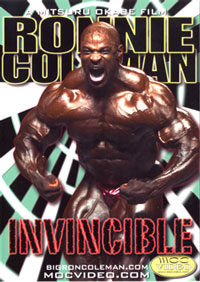
Colossal Workout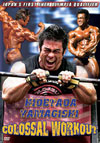
Dennis Wolf
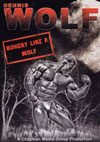
Dorian Yates
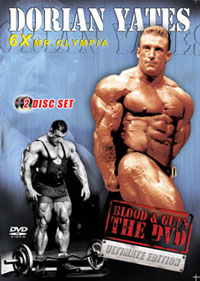
Believe to Achieve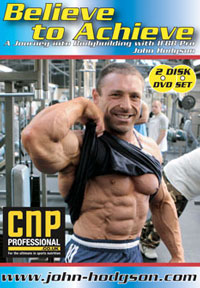
Jay Cutler's house

Hard and Heavy
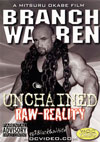
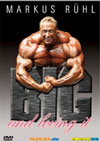
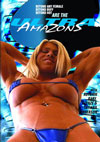
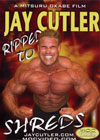
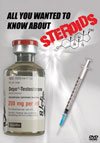
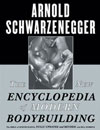
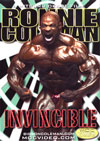
|
Strongman Training 101, Part 2
By Brian King
In part one of Strongman Training 101, we covered in-season and off-season
training. Part two will focus on cardio, core flexibility work, and diet as well
as the most important Strongman implements that a beginning Strongman athlete
should have.
Question: Do you think cardio is very important and how much, if any, do you
perform?
Hammer: I believe cardio is important for the Strongman competitor. A good
aerobic base allows the body to recover faster in between sets or events.
Because aerobic training can be detrimental to strength gains, however, longer,
less intensive cardio should be performed in the early off-season phase while
short, intensive interval training should be used during the competition phase.
The types of cardio that I use are sled dragging, dumbbell or barbell circuits,
judo, kickboxing, and other MMA activities.
Dermody: I honestly don???t do any cardio for Strongman. Obviously, some medleys
require cardio, but I just train the specific contest medley to get in shape for
it. These are done during event training.
King: I think cardio is very beneficial to Strongman. Running out of breath is
the rate limiting factor in most Strongman events. I train cardio in a sport
specific manner because I don???t feel that long duration cardio will provide much
benefit to the Strongman. My cardio sessions are performed in an interval type
fashion after my workout. For example, I may do sled backpedals for 50 feet and
rest ten seconds. I???ll do this for ten sets. Some other cardio exercises that I
do are lightened yoke carries for 300 feet, quarry rock carries for long
distances, and bleacher runs. I???ll get on the elliptical machine for 15???20
minutes after event training because I???ve found that it speeds up my recovery.
Question: What are your thoughts on core, balance, and flexibility work, and
what types of exercises do you use?
Hammer: Core stability should be placed high in a Strongman???s training regime.
Performing squats, deadlifts, and overhead lifts without the use of a belt are
the best core exercises an individual can do. I believe that the Strongman
events provide a great combination of core and balance work. Static flexibility
work is great after a heavy workout session and will help limit soreness, but
other than that I don???t believe in it. I utilize dynamic flexibility prior to
workouts where I will go a distance of 10???15 yards. I???ll perform exercises like
straight leg kicks, walking lunges with twists, skipping, jogging, and other low
impact plyometrics to help warm my muscles up and get ready for the workout to
come.
My core work is primarily done on main lifts like a max effort on squats without
a belt or a max effort push press without a belt stabilizing the bar overhead
for 10???20 seconds. I use other exercises like reverse hypers, back extensions,
or weighted decline sit-ups but not too much during the competitive season.
Dermody: I think core work is extremely important for Strongman. I train core
work four times per week. I will perform traditional work such as heavy,
weighted sit-ups for sets of eight or less twice a week and medicine ball work
twice a week. The medicine ball movements are side throws, side chops, forward
chops, overhead throws, backward overhead throws, single and double arm chest
passes, and forward and backward rotational throws. I don???t perform any specific
balance work for Strongman. I do dynamic flexibility at the start of every
training session and static work at the end. Dynamic stretching is important in
maintaining athletic ability and preventing injury by warming up thoroughly.
Static stretching is important for injury prevention and decreasing recovery
time.
King: All three are very important in Strongman. I feel that belt-less squats,
deadlifts, and other events are good for core and balance, but I believe you
must work the two specifically. Performing specific balance and core work will
help in injury prevention and will help improve any muscle imbalances you have.
The types of balance and core work I do include one arm dumbbell overhead
presses while standing on one leg, bridge work off a stability ball, and two
point bridges (bird dogs), where I get in a push-up position with dumbbells and
take one hand off and one leg off the ground and hold for a count. I also do
other types of movements involving a stability ball. This type of work hits the
smaller muscle groups, increases concentration, and teaches your muscles how to
stay contracted for long periods of time. I don???t perform many weighted sit-ups
just because my abs are trained hard during event days.
I think flexibility is very important, and you should stretch every day. Before
training, I do a specific warm up that includes dynamic stretching with very
little static stretching. For example, if I train legs, I will do leg kicks,
form running, and static stretch my adductors and hip flexors for about a ten
second count. I won???t static stretch a trained muscle until the next day because
the muscle is fried and there won???t be much benefit. Both types of stretching
are great for improving athletic ability and preventing injury. I have to do
more stretching now that I am 35 years old. I static stretch my hips, calves,
and hip flexors every day, holding the stretch for up to 30 seconds. Stretching
these muscle groups daily helps my mobility and keeps me from walking like
Frankenstein.
Question: What approach do you take when choosing what to eat, and what type of
supplements do you take if any?
Hammer: My approach to eating is simple. I start eating early, and I stop eating
late. I eat a fairly clean diet and don???t find myself at fast food shops too
often, although I do eat Subway a lot. I take my meals to work so that I always
have something to snack on throughout the long work day. Here???s a sample of my
eating during the school year:
Meal 1 (5:30 am)
oatmeal (two cups) with raisins and honey
skim milk (8 oz)
Meal 2 (8:00 am)
bowl of Grapenuts cereal using a Met-Rx RTD shake as milk
yogurt (8 oz)
Meal 3 (11:00 am)
two turkey sandwiches with lettuce and tomato
orange or apple
Meal 4 (2:00 pm)
one Met-Rx RTD shake
one peanut butter and honey sandwich
Meal 5 (5:00 pm)
two Met-Rx RTD shakes
orange or apple
Meal 6 (8:00 pm)
one quart of low fat chocolate milk
Cliff Builder bar
Meal 7 (11:00 pm)
peanut butter and jelly sandwich
skim milk (8 oz)
I don???t have an approach to supplements. I take a creatine product, extra
protein, BCAAs, and glutamine for recovery and restoration.
Dermody: I go by the motto, ???Never get hungry and never get thirsty.??? I try to
get a constant flow of good calories into my body throughout the day. I probably
take in 5,000???6,000 calories per day. Some of the foods I eat are chicken
breasts, skim milk, peanut butter, ground turkey, lots of fruit and vegetables,
tuna, and salmon. As far as supplements go, I will ingest protein shakes or bars
throughout the day when I don???t have access or time to eat real food.
King: Basically, I eat three times a day and throw in some type of snack. The
majority of my meals consist of potatoes, rice, red meat, chicken breast, dairy,
fruits, and vegetables. I don???t get caught up in how much protein I???m getting,
and I don???t really care. I think that if you eat a diverse range of foods and
consume enough calories to stay in an anabolic state, you???ll be fine. For
instance, if I consume 5,000 calories, I???ll go out on a limb and say that
1,000???1,500 calories will come from protein. If I don???t have time to cook my
meals, I don???t hesitate to go to McDonalds. I???m trying to get strong and
maintain my weight, not work on my six pack abs. My post workout meal is a quart
of 2 percent milk and a king size Snickers. My breakfast usually consists of six
to eight scrambled eggs with one cup of oatmeal. A typical lunch is two cups of
brown rice, a 16-ounce sirloin, and one cup of shredded cheese all mixed
together and thrown into a couple of soft shell tortillas. Dinner may be a box
of whole wheat Stove Top stuffing with two chicken breasts. These are just a few
of the things that I consume throughout the day.
As far as supplements go, I don???t take too many things. I think that about 90
percent of the stuff out there is s**t. I just stick with a weight gainer
protein powder, some creatine, and some NO2. Although not a supplement, I try
and ingest at least 25???30 grams of fiber per day. If you???re consuming a large
amount of food, especially meat, you absolutely need fiber. I usually take about
two tablespoons of psyllium husk per day and wait for the magic to happen.
There???s nothing better then dropping a two-foot fudge stick when you get up in
the morning.
Question: If you were just starting out and/or had a limited budget, what two
Strongman implements would be the most important to have and why?
Hammer: On a limited budget, I would suggest getting a 12-inch log to clean and
press and a yoke. The log itself is very different than a bar. If an athlete
goes into his first contest without having used logs, he will be at a
disadvantage. The yoke is another piece of equipment that is a staple of the
Strongman and will be at most contests. You can do so many different variations
with the yoke, which is what makes it an important piece of equipment to have in
your arsenal. Other items you can pick up on a limited budget are tires (free)
and kegs (free).
Dermody: I would say Atlas stones because they???re very hard to replicate in the
weight room. My second choice would be a good yoke because you can use it for so
many things. I use my yoke for sled drags, Conan???s wheel, seated arm over arm,
car squats, and truck pulls. Most of the other events you can simulate in the
gym.
King: I would have to say Atlas stones because there is no way to mimic this
event in the gym. Plus you will see this at any show that you compete in, and
many times this event is the deciding factor in who takes first place and who
takes second. The second piece of equipment would have to be a set of Farmer???s
walks. I don???t think there is any one event that shocks the body more than the
Farmer???s walk. The Farmer???s walks build the grip and pretty much tax the entire
body. All of the other events can be trained in the gym.
Eric Hammer is currently the assistant director of Olympic sports performance at
the University of Louisville, and he works with the strength and power sports.
Before coming to Louisville, Hammer was the assistant strength and conditioning
coach at the University of Nebraska-Omaha, where he worked with football. He
holds a master???s degree in exercise science as well as CSCS and USAW Level 1
certifications. Hammer has competed in Strongman for three years and recently
turned professional in July.
Bryan Dermody is currently the football assistant strength and conditioning
coach at the University of Louisville. Before coming to Louisville, Dermody held
the same position at the University of Iowa. He holds a master???s of science
degree and is CSCS certified. He also competes in Strongman.
If you use an article from this site, Please consider a link back to WWW.BASSKILLERONLINE.COM if possible.. Thank you kindly
Come join us at the hottest Bodybuilding steroid board around
Free to join!!!!
World class bodybuilding


|
|




